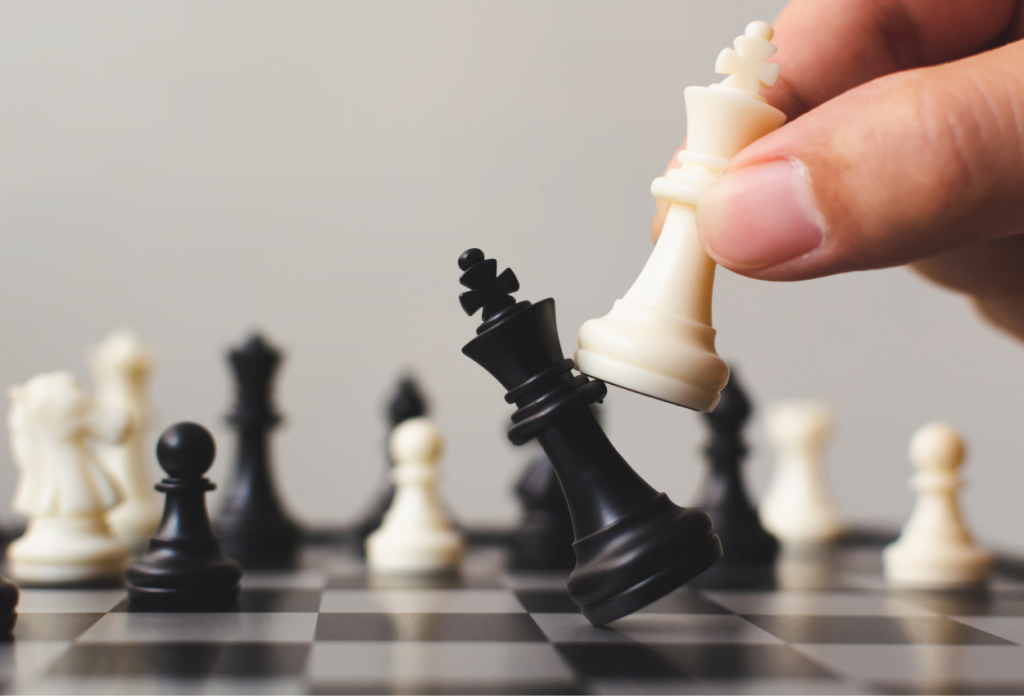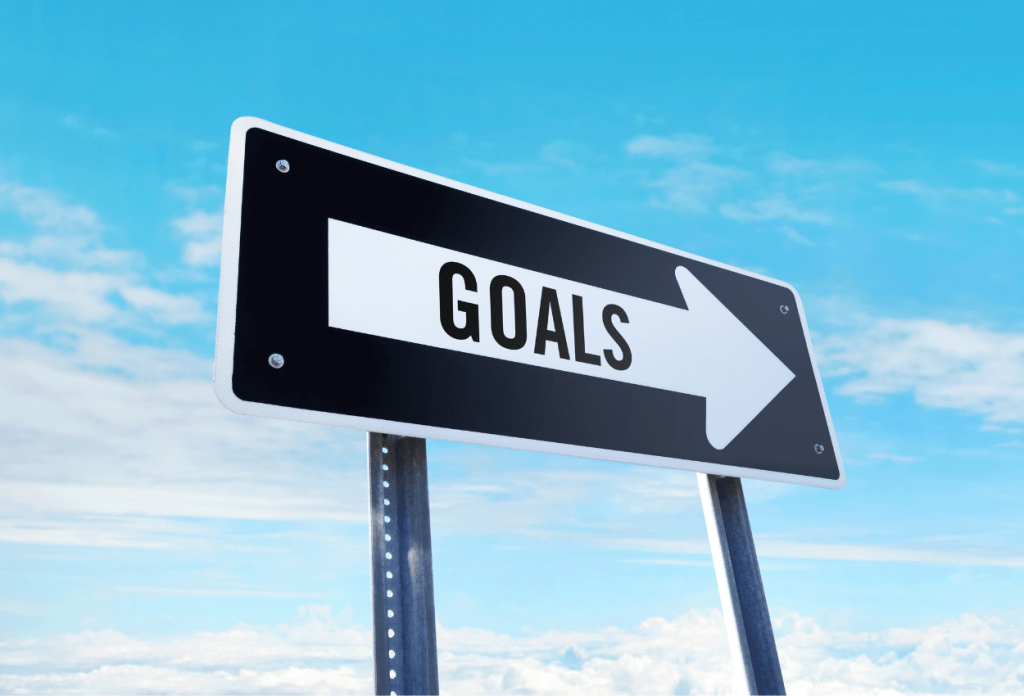
Have you ever felt stuck in a rut and unable to get out of it? Most of us have been in that position before, and it’s hard to know what to do to change things. We often get so centered on our behavior patterns and lives that breaking out feels impossible. However, there’s a growing movement towards goal visualization and using this powerful tool to change lives for the better. It might seem a little “new age” to some, but it’s shown real benefits to many of our clients.
In fact, our team at A Cognitive Connection understands how to help our patients visualize their goals more efficiently to improve their lives in powerful ways. If you’re still on the fence about this technique and aren’t sure what to try, it’s a good idea to read this article to learn more. We’ll go in-depth on goal visualization, help you understand whether it’s right for you, and make it easier for you to improve your life. Let’s dive right in to transform your life for the better!
What Is Visualization?

Goal visualization is a far simpler thing than it might sound like at first. It refers to clearly picturing (or visualizing) what you want to achieve in life. That’s it! Depending on your preference, visualization can take many forms. For example, some people simply prefer to say their goals out loud, often at the beginning and end of every day, to reinforce them—other people like writing them down or even creating a warboard highlighting their particular goals.
Amazingly, visualization is common in the highest levels of success. In an article by Unfinished Success, various professional athletes and celebrities discussed the power of visualization in their lives. Jack Nicklaus, one of the best golfers ever, claimed that he “never hit a shot, not even in practice,” without knowing exactly, in his head, how it would play. He claimed that he could literally visualize the shot playing out exactly how he wanted. Most times, he was right.
Such claims might seem outlandish, but they have the ring of truth to them. In a way, they’re no less silly than claiming that older adults can stave off mental health decline by playing chess. However, studies show that even something as simple as brain training apps can significantly improve a person’s mental acuity. As a result, goal visualization for Colorado Springs residents is worth taking seriously, especially if you’ve struggled to get where you want in life.
Why Do Cognitive Tools Like Goal Visualization Help?
Now, before we discuss metaphysical concepts like “The Secret” or how we can change the universe with our minds, let’s be clear: visualizing your goals doesn’t guarantee that you’ll achieve them. Simply thinking about your goals or stating them out loud doesn’t rewire the universe to work in your favor. We don’t say this to discourage readers but to ensure they have the proper expectations. Goal visualization isn’t going to change your life overnight.
That said, goal visualization does help many people in a variety of ways. It basically helps you focus more effectively on what you want to achieve and minimizes harmful interference. In an article by Psychology Today, several potential visualization benefits were broken down into three levels: emotional, cognitive, and behavioral. Like any kind of reinforcement, goal visualization can slowly reprogram your mind towards positivity on these levels:
- Emotional: Goal visualization techniques, such as emotional journaling, help you reinforce positive emotions and minimize negative ones. Often, these adverse blockers can hold people back from success by demotivating them before they even begin. Goal visualization can work as cognitive brain training to improve your emotional control.
- Cognitive: As we struggle to handle our day-to-day life demands, it’s all too easy to get cognitively exhausted or experience cognitive dissonance. However, visualization can help you mentally by forcing your mind to imagine a positive future. By stretching your imagination in this way, you can fight back against any cognitive losses.
- Behavioral: People often fall into destructive behavioral patterns that make achieving their goals hard. Procrastination can make it almost impossible to complete projects on time. Teenagers, in particular, often fall into bad behaviors that make success much trickier. Thankfully, goal visualization can break these unfortunate patterns.
These benefits probably seem incredible to most readers. Others might still be on the fence or even doubtful of these claims. That’s understandable. After all, if it was so easy for Colorado Springs people to improve their lives with visualization, wouldn’t everybody do it? The thing is that most people in El Paso County probably visualize daily without even realizing it! However, focused visualization can be compelling, especially if you set your expectations correctly.
Does It Really Work?
There are very few scientific studies examining visualization simply because it’s hard to test the conditions and even decide how to test something like this process. However, a study collected by the National Library of Medicine examined the concept of imagining success by working with a series of skilled tennis players. The goal of this study was to gauge whether visualizing their services and the success of each hit would make them better players than if they didn’t.
The survey’s results were fascinating. The study stated that tennis players who visualized their shot would hit inside the service box (i.e., they wouldn’t miss the proper area) far more than those who did not. There were also fewer misses than those who did not visualize. While this is simply one case, it does show promising results. At the very least, visualizing the shots seemed to calm players down and give them more confidence, which increased their success.

In a less scientific article published by Better Up, a list of athletes who use visualization highlighted its widespread nature among competitors. For example, award-winning pros like LeBron Janes, Michael Phelps, and Greg Louganis all admitted to using visualization while competing. The article also discussed how dancers, chess players, and other experts visualized their success to help motivate themselves to achieve their goals more effectively.
Again, though, even articles like these emphasize the importance of putting in the hard work to thrive. Sure, chess prodigy Beth Harmon visualized winning all her matches ahead of time. But she also read every chess book he could find and went to bed thinking about strategies to reinforce them in her mind. If you remember that visualization is a useful motivational tool and not a solution to your problems, you can tap into its unique powers to meet your goals.
Are There Specific Strategies I Can Use?
Forbes and many other publications have highlighted helpful visualization strategies to improve your life. ClickUp, in particular, discussed 10 unique techniques to tap into visualization on your terms by focusing on your strengths and minimizing weaknesses. These concepts are some of the best methods available for taking your life to the next level with minimal challenge:
- Vision Boards: A vision board is a powerful tool that lays out your targets, needs, values, and success steps visually to make each of these elements easier to track.
- Incremental Steps: Break your goals down into small steps that you can do every day, such as writing 500 words in your New Great American novel.
- Sensory Patterns: Sit down and imagine your success using all five senses: sight, smell, touch, taste, and hearing. Make these very immersive experiences.
- Success Maps: Create a digital success map highlighting the steps you need to take to achieve your goals. Track each step as you complete them to show your progress.
- Drawing Goals: Write your goals out on paper or use digital tools, and try to imagine these success scenarios happening to you in real time to solidify them.
- Positive Affirmations: Daily affirmations of your worth can break through negative behavior patterns and help you visualize your goals powerfully and successfully.
- Mental Rehearsals: Whether you’re a musician, actor, or athlete, mentally rehearsing your performances can make the real thing seem much easier when it comes around.

Can A Cognitive Connection Help Me?
At A Cognitive Connection, we can help you with behavior therapies that can change your life by reinforcing better actions. To help with that, we provide Mind’s Eye therapy, a system developed by Theta Technologies. This treatment uses light and sound in various combinations that help calm your mind without using drugs or other substances. You’ll be in a meditative state that not only relaxes your mental turmoil but helps make you more open to positive reinforcement.
For example, many of our clients visualize their goals during this treatment, using the uniquely calm state it produces to make these ideas easier to imagine. In fact, you’ll likely feel relaxed for a few hours after treatment, which can make it simpler to reinforce your goals. Take your time building elaborate mental scenarios, watching yourself get crowned as a championship athlete, or seeing your name in light as a best-selling author: the possibilities are endless!
Even better, we schedule regular events and classes that can help reinforce positive behaviors in your life. We can provide individualized tutoring and one-on-one support to all our clients, particularly children. Our team is trained to give our clients unconditional and caring support in a motivational and engaging environment. Most walk away with more confidence and inner strength, which is a powerful reminder of the transformative benefits of positive thinking.

Call Us Today to Get Started!
Our Mind’s Eye treatment is designed to make it easier for you to visualize your goals and achieve your lifelong dreams. While you still have to put in the hard work of accomplishing them, knowing what they are can help clear your mind and make them easier to finalize. With the help of our guided team, it should be simpler for you to make real progress in your life, particularly if you focus on improving yourself based on your work with our team of mental health specialists.
So please don’t hesitate to contact us today by calling (719) 358-6637 or using our online form. Set up an appointment with us, and we’ll assess your needs very carefully. If we think you qualify for Mind’s Eye, we’ll fit you into a therapy plan and ensure that you get support. Furthermore, our therapies also include behavioral counseling and treatment that can improve your success. There’s a reason why our testimonials are so positive: we know what we’re doing!


